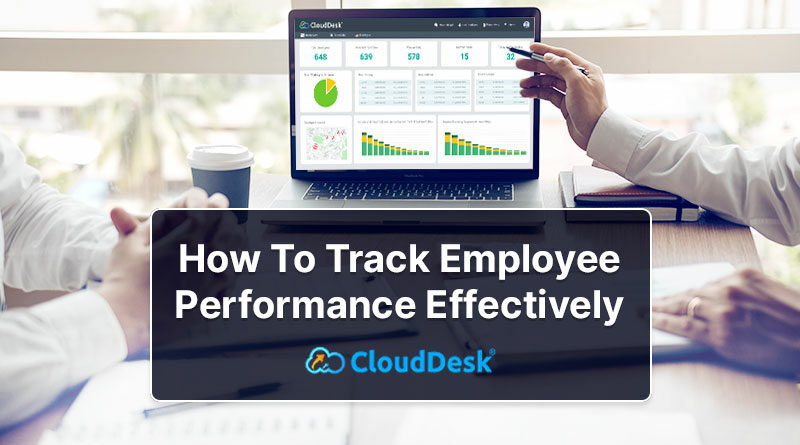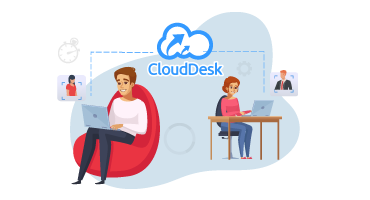How to Track Employee Performance Effectively
Measuring your team’s performance is vital for your company’s success. However, this isn’t just a case of knowing what an employee does on the clock, but also understanding how productively they use their time. How to track employee performance refers to everything business owners or managers should do to assess an employee’s work, productivity, or performance. As such, this includes obtaining information about your employees and conducting a thorough analysis of their strengths and weaknesses.
So, where should you begin in this regard? The first stage of employee performance tracking is to collect objective data on how successfully your employees meet the company’s objectives. Indeed, tracking employee performance can help ensure that your company is running smoothly, which may help it meet strategic goals.
To properly measure and enhance employee performance, you must first understand the role your employees play in achieving the organization’s goals. Thereafter, your firm must implement the right tools and techniques to track and assist them with managing their own productivity.
1.Set Specific, Measurable, and Actionable Goals: In order to increase employee performance, you must have a clear understanding of what employee performance improvement looks like in the context of your business. Unless you have specified measurable productivity targets, it will likely prove difficult to track the effectiveness of your performance improvement plan.
To begin with, identify your strategic priorities and develop specific, measurable, and actionable goals that support those focuses. With appropriate goals established, you can then decide the metrics of employee performance that will ultimately improve the effectiveness of your business’s strategic initiatives.
What are your top long-term goals for your organization or team? Sometimes, the answer is crystal clear. It could be sales figures, customer satisfaction or retention, or any other goal that can easily be tracked. However, you may need to explain things a little more thoroughly to your employees in other cases. Keep track of how well a new marketing campaign is doing, and make sure that your customer service staff are always polite.
2. Monitor Performance using Employee Monitoring Software: You cannot improve unless you measure employee performance. Once you have set and explained your expectations, using employee monitoring software can help you track how well your employees are meeting those objectives.
With employee monitoring software, you can assess each employee’s individual output, productivity, and the quantity of work they produce.
You can also use the software to monitor work performance by tracking data that matters exclusively to your business, such as the time spent on individual tasks, web usage, or overall internet activity.
Naturally, there’s no single solution for every business. As such, the most optimal method to track employee performance will depend on the type of work your employees do. Nevertheless, employee monitoring software remains an excellent tool for businesses that regularly use computer devices to perform their core duties. Indeed, these systems help determine specific details regarding the employee’s work activity and identify unproductive internet usage. You will also be able to identify what type of tasks your employees excel at and where they fall short, which offers staff training and productivity enhancement opportunities.
3. Practice Quality Over Quantity: When you start to track employee performance, be sure you follow the right track. The quality of an employee’s work is more important than the number of their working hours or even their attendance record. While those elements are still important, they should not overshadow the significance of specific accomplishments. Encourage your employees to take breaks when they feel exhausted, which will eventually help them to finish projects before deadlines successfully.
Get insights regarding intangible skills through 360-degree feedback. Soft skills are important for your company’s success and growth. Collect input from coworkers, subordinates, customers, and supervisors from different departments using the 360-degree technique. In turn, this may help provide a more thorough understanding of the employee’s problem-solving, goal-setting, character, leadership, and team-building abilities.
4. Review Work-In-Progress Frequently: Along the way, always be sure to double-check your employees’ work performance. If an employee is not responsible for the final deliverable, watching and observing their work is the same as examining work in progress. Alternatively, if they are responsible for the final product, spot-check as they work on it; for example, if they are managing a database, spot-check their records. Examine drafts if they are writing a report. Although it is impossible to keep track of everything each employee does, you can check random samples on a regular basis to help your employees stay alert and create a sense of accountability.
5. Make Inquiries: Always look to obtain information. Inquire with vendors, customers, coworkers, and other supervisors about an employee’s interactions. Stay professional; always keep your inquiry specific to the employee’s work and never delve into their personal matters.
Don’t ask for judgment calls; merely request information. Also, don’t believe everything you hear; third-party assertions that haven’t been verified are simply hearsay. However, the more you keep your ear to the ground, the more you’ll be able to tell which sources are reliable. So, try to make it a habit to ask around on a frequent basis.
With the approaches outlined above, your organization could significantly increase employee performance by creating meaningful goals, defining and measuring metrics that support the organization’s targets, and maintaining a clear vision for your employees.
Regular employee performance reviews provide you with a clearer picture of an employee’s overall work quality. The information gathered during these evaluations may help you to make better decisions on raises, promotions, and bonuses for employees. After all, for successful reviews, you must establish performance standards that every team member must follow.
If you need employee monitoring software to help you track employee performance, you need CloudDesk. Contact us today to learn more about our features and offers.












